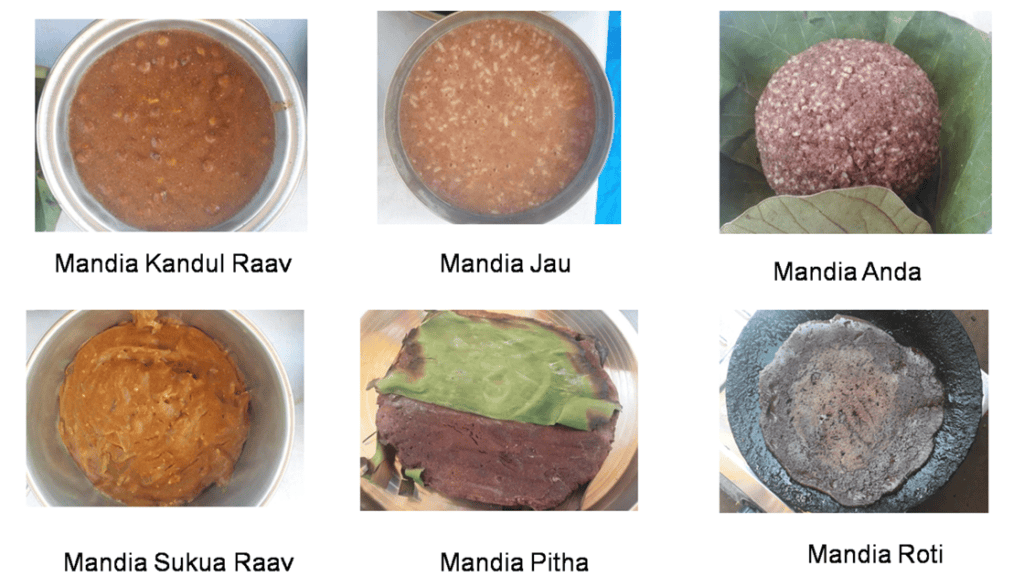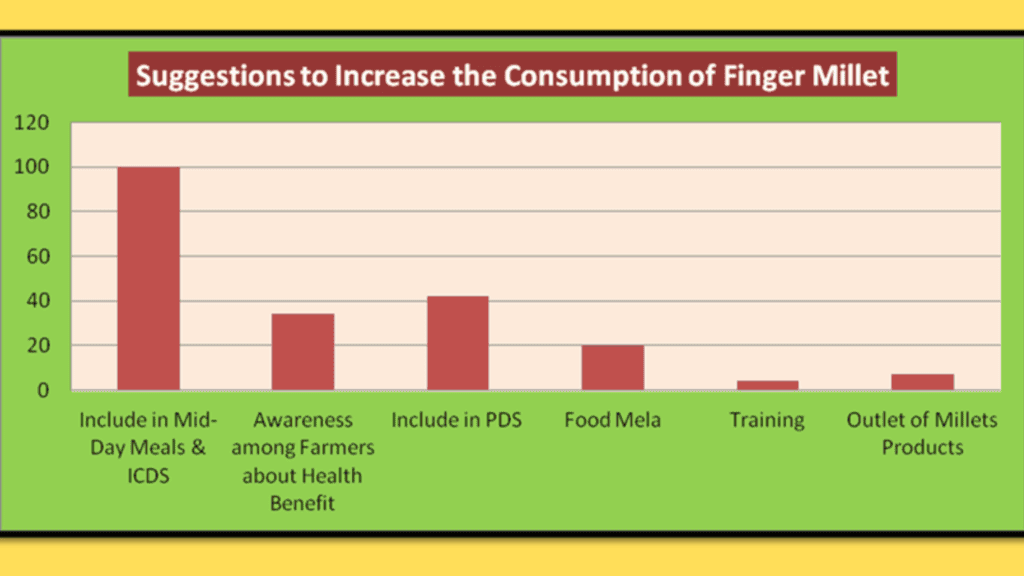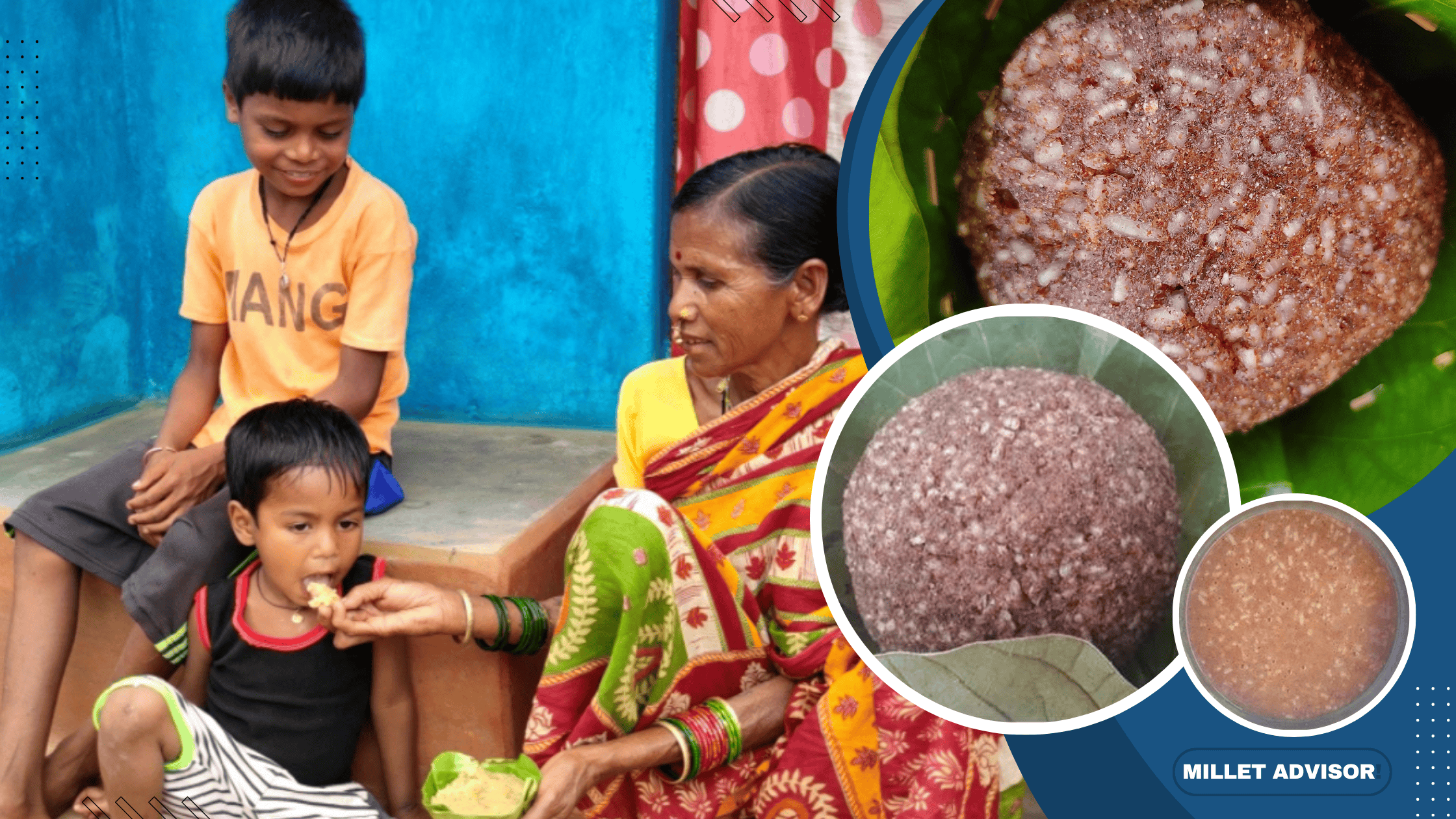Table of Contents
Traditional Millet Recipes:
Millets are the traditional staple food of the tribals of Odisha. It plays an important role for the small and marginal tribal farmers as millets can address food, nutrition, fodder, and most importantly climate change. Millets are just not food but an integral part of the tribal communities. Millets are adapted to a wide range of ecological conditions demanding less water and inputs and fit well even in infertile soil.
Generally, these millets are rainfed crops mostly grown in the tribal-dominated areas of Odisha. It has a greater importance for sustainable agriculture and food security. Millets are the creative interaction of the tribals with their surrounding environment and its biodiversity.
Millets are the storehouse of nutrients as they contain protein, fiber as well as micro-nutrients such as calcium, iron, zinc, and magnesium.
The food system of the tribals has undergone many changes in the last 2 decades and still changing fast. In this transition, the millet food is slowly losing its links with the ecosystem and its biodiversity and the new generations are not inheriting them. There are a couple of reasons for it. But the most appealing reason for preferring to single cereal-based diet.
In the last 7 years, there has been a drastic change in the millet ecosystem in Odisha and the sole credit goes to the “Special Programme for Promotion of Millets in Tribal Areas of Odisha (Odisha Millets Mission) that was launched by Govt of Odisha in 2017 to revive millets in farms and on plates.
Valuing the Tribals’ Traditional Millet Recipes:
Odisha tribals possess the skill and knowledge of making different types of traditional millet recipes. Millets are considered to be part and parcel of their food culture. It is positioned as healthy energetic food in their mind. The millet recipes are unique in taste, appearance, and cooking style.
However, tribals grow different types of millets like Finger Millet, Little Millet, Foxtail Millet, Sorghum, and Pearl Millet. The acceptance of Finger Millet in their traditional diet is more as compared to other millets. This is due to the ease of processing after harvesting and the versatility in nature for making millet recipes.
Study on Finger Millet Recipes of Tribals of Odisha:
The study was conducted in the tribal area of Koraput in Dasamantpur Block. In this study, a door-to-door survey was undertaken from 100 sample households. Information related to the traditional millet recipe was collected and documented.

From the analysis of the data, it is found that Mandia Jau (Finger Millet Porridge/Gruel) is consumed by 38% of people. For making Mandia Jau, it hardly takes 10-15 minutes. The flour is taken in a bowl and a small amount of water is added to it and a semi-liquid mix is made by mixing it properly and ensuring no lumps are left. In the meantime, water is taken in a cooking pot and after the water boils, the semi-liquid is put into it. With a ladle, it is continuously stirred for about 2-3 minutes, and finally, the flame is off and it is allowed to cool down.
Apart from Mandia Jau, the next Finger Millet recipe that is made by tribals is the Mandia Tampa (1 part of rice is mixed with 2 parts of Ragi flour). Generally, broken rice is preferred to make this recipe. When the tribal people go to work in their fields, they carry Mandia Tampa in the jar to have it during lunchtime.
Mandia Pitha (homemade pancakes/dumplings) are consumed occasionally. It is made during festivals or when any guest comes to their home. Pithas are made by mixing Finger Millet flour with jaggery, chili, a little amount of water, and salt as per taste. A dough is made. Then the dough is flattened and wrapped in banana leaves, turmeric leaves, or jackfruit leaves and roasted on a circular griddle made of iron or clay in low flame. When one side is cooked, the other side is flipped and the pitha is ready to consume.
The other interesting millet recipes are Mandia Anda( a round ball shaped made with Ragi flour and broken rice), Mandia Kandul Raav( Ragi flour with some soaked whole Arhar dal with masala), Mandia Sukua Raav (Ragi flour with dry fish with some masala).
Millet recipes are also made with Little Millet and Foxtail Millet. But it is slowly disappearing from their diet. It is due to a lot of drudgery involved in processing or removing the husk from it. The tribal women say it takes about one hour to process one kilogram of millets. If they want to make any dish out of Little Millet and Foxtail Millet, they buy the processed millets from the market, and that too pays a high cost, around Rs.80-120 per kilogram.
To give you, a glimpse of the Little Millet Processing, I have documented the entire process.
Frequency and time of Finger Millet Recipe Consumption:
In this study, information related to the frequency and quantity of Finger Millet consumed was collected from 100 sample households. It was found that every household had consumed finger millet recipes in the last year. Around 90% of them consumed it daily and 10% consumed it occasionally. The consumption of finger millet reduces during the rainy season and sometimes they are unable to consume it when the stock is out in their home.
To understand the time and the quantity of consumption of the sample households, the quantity was taken in terms of the number of glasses(250 ml), and the time was taken as morning, afternoon, evening, and night. It was observed that 41% of the sample households had taken two glasses and 49% took 3 glasses in the morning. Most of them are taken during the morning and afternoon but few during the night. It was also observed that the quantity intake increases during the summer season and is negligible during the rainy season.
Understanding the perception of tribal communities regarding the consumption of finger millet recipes is integral to promoting their nutritional well-being. This study employs a ranking system to ascertain key reasons driving the consumption patterns of finger millet recipes among tribal populations. The findings shed light on avenues for increasing the consumption of finger millet and improving overall community health and sustainable nutrition.
Perception of Finger Millet Recipes Consumption:
An analysis of the reasons behind the consumption of finger millet recipes revealed several noteworthy insights. Foremost among these is the perception that finger millet offers higher energy levels compared to other foods. Additionally, participants recognized finger millet as a healthy and highly nutritious option, superior to conventional staples such as rice and wheat. Furthermore, the ease of digestion associated with finger millet was acknowledged, alongside its potential to regulate blood sugar levels. Notably, while awareness regarding the blood sugar-regulating properties was relatively low, the overarching sentiment favored finger millet consumption for its health benefits and energy-boosting attributes.
Suggestions to Increase Finger Millet Consumption:
Drawing from the study’s findings, a holistic approach is proposed to augment finger millet consumption among tribal communities. This approach encompasses measures to enhance production and productivity, address consumption patterns, and streamline the primary and secondary processing of finger millet.

(A) Enhancing Production and Productivity:
- Promote awareness of the System of Millet Intensification (SMI) to maximize finger millet yields.
- Emphasize the conservation of local finger millet varieties resilient to climate change.
- Prioritize weed control measures to optimize finger millet production.
- Encourage timely sowing/transplanting practices to boost productivity.
- Highlight the economic opportunities associated with increased finger millet production, both for consumption and commercial purposes.
- Advocate for the utilization of finger millet residue as nutrient-rich fodder.
- Support the development of context-specific improved finger millet varieties to enhance productivity and nutritional content.
(B) Addressing Consumption Patterns:
- Promote daily consumption of finger millet as a traditional dietary practice among tribal communities.
- Organize food festivals to celebrate traditional finger millet recipes and foster community engagement.
- Provide periodic training sessions to enhance cooking skills and introduce modern finger millet recipes.
- Encourage the inclusion of finger millet in government feeding programs such as mid-day meals and Integrated Child Development Services (ICDS) to improve nutritional outcomes.
- Raise awareness among farmers about the health benefits of finger millet consumption through informational campaigns and market outreach initiatives.
(C) Streamlining Processing Methods:
- Establish community hiring centers to provide access to farming equipment for small-scale farmers.
- Encourage entrepreneurship in agricultural services to establish local processing facilities.
- Introduce community pulverizers to facilitate efficient milling of finger millet, reducing manual labor and empowering women.
Initiatives of Odisha Millet Mission:
The Odisha Millet Mission has played a pivotal role in revitalizing finger millet cultivation and consumption within tribal communities. Through initiatives such as food festivals and awareness campaigns, the mission has successfully reintroduced millets into local diets, particularly among children and women.
Conclusion:
Promoting finger millet consumption represents a significant opportunity to improve the nutritional security and overall well-being of tribal communities. By valuing traditional millet recipes and implementing targeted interventions to enhance production, processing, and consumption, we can ensure the preservation of this valuable crop heritage while safeguarding community health in tribal areas. Now is the time to prioritize millets and harness their potential to nourish communities and sustain ecosystems for generations to come.
Author: Tapas Chandra Roy, A Certified Farm Advisor on Millets, ‘Promoting Millets from Farm to Plate’ and an Author of the book -” Millet Business Ideas-Empowering Millet Startups”. In a mission to take the forgotten grains- Millets to Millions. To remain updated on my blogs on Millets please subscribe to my newsletter and for any queries please feel free to write to [email protected]

